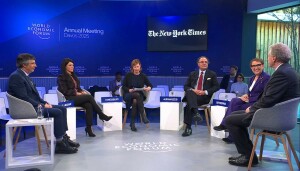News that ECC has allowed private importers to purchase 400,000 tons of urea is a matter of routine event for those following the farming sector, but it may well be of particular interest to Mr Khalid Mirza. This is because contrary to the justification provided to allow urea import, urea shortage is minimal at the end of the year, whereas the Rs 750/bag subsidy to private importers is either a serious example of sheer negligence or a sign of favouritism towards selected importers.
Pakistan is not expected to face major urea shortage any time till December 2009, assuming 10 percent increase in its usage. The country was comfortably sitting with a pile of 143,229 tons of urea at the end of August, and considering that September-November is not a high urea consumption period; the demand of another 2 million tonnes by December could have been easily met through domestic production and imports equalling just 100,000 tons. So really, what's the need of importing four times the demand?
One may argue that allowing imports at this stage is to hedge the local farmer against any price increase in the international market - but this argument is flawed. International urea prices are on a consistent decline and are expected to slide another 10 to 15 percent by the year end, owing to surplus production in major urea producing countries. The timing of this import, therefore, questions the wisdom behind the decision.
Then there is a subsidy issue. The importers will get Rs 750 for each bag of urea - a move meant to subsidise the farmer. While the notion is commendable - and in line with past practices where the government typically absorbs 2/3rd of urea import price to encourage fertiliser usage - in this year's case such a big subsidy is a bit unwarranted.
Urea prices in the global market have crashed from $800/ton in August 2008 to $270 ton in August 2009. On the contrary, the price of domestic urea has surged by 14 percent in the meanwhile - reducing both the price differential and the need of huge subsidy.
The latest reported urea price in the local market is Rs 767/bag, whereas imported urea cost around Rs 1,120/bag. This differential of Rs 353/bag clearly shows that a subsidy in the range of Rs 350-400/bag would have been sufficient to ensure that imported urea is sold at local market prices. A sum of Rs 6 billion that would be paid as subsidy to the importers can be nearly halved to Rs 3.2 billion if the decision markers become more prudent.
BR100
11,988
Decreased By
-121.3 (-1%)
BR30
36,198
Decreased By
-400.2 (-1.09%)
KSE100
113,443
Decreased By
-1598.8 (-1.39%)
KSE30
35,635
Decreased By
-564.3 (-1.56%)
























Comments
Comments are closed.